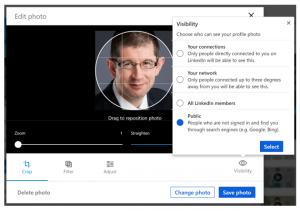
There’s little doubt that a wide range of digital and social trends influence your business decisions on all levels. Is that shocking? Not really, still many business decision makers don’t consider the implications that these digital and social trends have upon areas such as developing and maintaining their company intranet. Analyzing those very same trends quickly uncover the need for a well thought-out intranet solution that is going to enhance your employee communication and productivity. Below, you will read about a few digital trends that you have probably at least heard about. But what you might not have considered is the impact these trends will have on how you use your companies intranet solution. Keep reading to make the connection!
1) Social Media Becomes Ubiquitous
 First, let’s start with the obvious. Increasingly, social media has become a regular part of our everyday lives. Consider these statistics:
First, let’s start with the obvious. Increasingly, social media has become a regular part of our everyday lives. Consider these statistics:
- 73% of the U.S. population now has a social media profile.
- The average U.S. adult now spends almost 2 hours every day on social media.
Can you imagine the world without social media? Especially younger generations certainly cannot. Concerns that employees may be on social media are now outdated – chances are they will be, whether you have policies against it or not. Redirecting their attention will be much more effective.
Implications for Your Intranet: Include a Social Component in Your Intranet Software
In today’s digital age, your employees will feel a natural urge to communicate with each other. So instead of trying to curb that instinct, why not take advantage of it? Adding a social component to your intranet can help improve your inter-employee communication, on multiple levels.
As it turns out, social interaction between employees increases productivity by up to 25%. Despite the negative connotations they sometimes carry, social intranets can have significant benefits for your business, regardless of your industry. They allow you to guide and monitor the conversations, collaboration, and other social activities of your workers.
2) Time is of the Essence
Have you ever noticed how everyone seems to want everything RIGHT NOW? As it turns out, it’s a society-wide phenomenon, and one that many experts connect directly with the instant gratification users crave and get from their digital experience. Here’s how one expert puts it:
“The unmistakable message people receive in both the workplace and marketplace is that faster is better… Of course, waiting has long been considered an annoying waste of time, and technology has only intensified the feeling.”
Digital users want information, and they want it now. It’s no wonder, then, that the definition of ‘fast’ is changing quickly. In a recent study, no less than 40% of consumers expected a response from a brand regarding customer service in an hour or less.
Implications for Your Intranet: Build In Time Savers
 Your employees want information, and they want it now. At its core, an intranet is designed to be a time-saver, helping workers collaborate on projects as well as making important documents and policies easily available to the entire workforce. So it’s only natural that your intranet infrastructure should have a variety of built-in time savers for your audience.
Your employees want information, and they want it now. At its core, an intranet is designed to be a time-saver, helping workers collaborate on projects as well as making important documents and policies easily available to the entire workforce. So it’s only natural that your intranet infrastructure should have a variety of built-in time savers for your audience.
These time savers could come in a variety of ways. A search function should be at the core, enabling users to find what they’re looking for in fewer steps. You could also consider building in a people search, which can especially help employees of larger companies find who they’re looking for – in HR, management, or elsewhere – and get their contact information quickly.
But saving time goes beyond search capabilities. The Bucknell article we quoted above also includes this important nugget:
“The need for instant gratification has resulted in an explosion of so-called multitasking in people’s daily lives.”
Your employees will often multitask to save time and ensure they get home on time. Easing that multitasking can be a crucial part of accomplishing that goal. Consider including collaborative schedules, project management tools, and interactive to-do lists as part of your intranet.
3) Mobile Starts to Dominate
The shift from desktop to mobile internet usage has long been in the making, and last year was its tipping point. In 2015, mobile internet usage surpassed its desktop counterpart for the first time, and that gap is expected only to widen in the near future. Mobile devices, both smartphones and tablets are here to stay, and beginning to dominate the market.
This trend manifests itself in a wide variety of ways. It even connects to one of our previous points: more users than ever before now check social media on their mobile devices, an average of 17 times a day for U.S. consumers.
Smartphones and tablets have been our cornerstone tool to navigate the digital world. So why should this trend stop at intranets?
Implications for Your Intranet: Mobile Accessibility
It’s 2016, which means you have no excuse. If you use an intranet for inter-employee communications, that system should be mobile-accessible. Chances are your employees will not just access it for information as they sit at their work computer they may look up vacation or sick time information from home, or even from their bed, or look up the contact information of a sales rep while on the road representing the company. As mobile devices increase in importance, so does the importance of ensuring that your intranet software is compatible.Mobile accessibility, of course, is a rather vague term. What exactly does that mean? Above all, it means that your intranet should be easily accessible and navigable from a mobile device of any size. That means your websites should be responsive, adjusting dynamically based on the user’s screen size. Alternatively, you can consider building an app for your intranet, though you will begin to run into issues of compatibility with differing mobile operating systems like Apple’s iOS and Google’s Android. But true mobile accessibility goes beyond that fact. An intranet that your employees can access from their smartphone can only be successful if they can access it outside of the workplace, which means you should host it remotely instead of on internal servers only accessible from your premises. True mobile accessibility means access from anywhere and any device in the world.
 Mobile accessibility, of course, is a rather vague term. What exactly does that mean? Above all, it means that your intranet should be easily accessible and navigable from a mobile device of any size. That means your websites should be responsive, adjusting dynamically based on the user’s screen size. Alternatively, you can consider building an app for your intranet, though you will begin to run into issues of compatibility with differing mobile operating systems like Apple’s iOS and Google’s Android. But true mobile accessibility goes beyond that fact. An intranet that your employees can access from their smartphone can only be successful if they can access it outside of the workplace, which means you should host it remotely instead of on internal servers only accessible from your premises. True mobile accessibility means access from anywhere and any device in the world.
Mobile accessibility, of course, is a rather vague term. What exactly does that mean? Above all, it means that your intranet should be easily accessible and navigable from a mobile device of any size. That means your websites should be responsive, adjusting dynamically based on the user’s screen size. Alternatively, you can consider building an app for your intranet, though you will begin to run into issues of compatibility with differing mobile operating systems like Apple’s iOS and Google’s Android. But true mobile accessibility goes beyond that fact. An intranet that your employees can access from their smartphone can only be successful if they can access it outside of the workplace, which means you should host it remotely instead of on internal servers only accessible from your premises. True mobile accessibility means access from anywhere and any device in the world.
But true mobile accessibility goes beyond that fact. An intranet that your employees can access from their smartphone can only be successful if they can access it outside of the workplace, which means you should host it remotely instead of on internal servers only accessible from your premises. True mobile accessibility means access from anywhere and any device in the world.
Building an intranet can be a long, complicated, but ultimately satisfying process. The best intranet software solution means giving your employees the opportunity to communicate with each other, receive important information in a timely manner and access that information (as well as their communication) from anywhere in the world. This success can only be achieved if you keep current digital and social trends in mind, which – as you should know by now – influence your business decisions on every level, including your intranet.
While considering what is the best intranet solution you will need to balance which features will work for your business vs having all of the bells and whistles. This is something that should be weighed up in conjunction with other aspects such as the cost of customization and ongoing maintenance. This is covered really well in the post The Best Intranet: Is There Such a Thing?
A well-built company intranet is a thing of beauty. Seamless communication to and between employees means greatly increased productivity, better adherence to company policies, and, as a result, better employee satisfaction rates. But are you building an intranet that encourages all of these values? The right intranet software can make the difference between disgruntled employees desperately searching for the information they need to succeed, and happy employees collaborating with each other for the greatest possible success.
Business & Finance Articles on Business 2 Community(104)
Report Post






